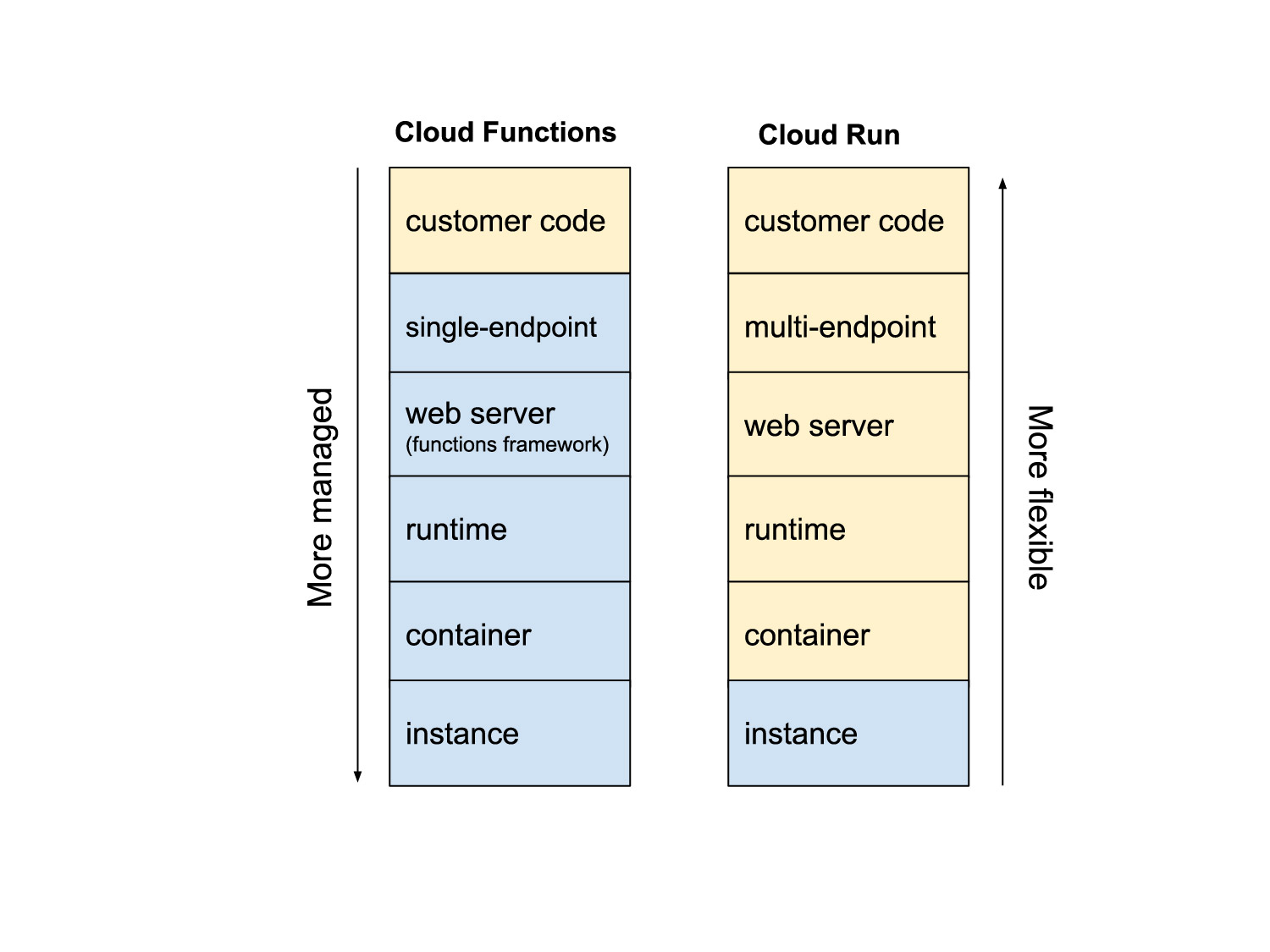GCP Cloud Run Service
A GCP Cloud Run Service is a serverless container platform that is a GCP service.
- Context:
- It can (typically) be used to run Containers without managing the underlying infrastructure.
- It can (typically) support various languages and libraries due to the flexibility of containers.
- It can (typically) scale automatically based on traffic, including scaling down to zero when there's no traffic.
- It can (typically) be priced based on actual usage (vs. pre-allocated capacity).
- It can (often) be integrated with other Google Cloud services like Google Cloud Storage, BigQuery, and Cloud SQL for enhanced functionality.
- It can (often) be used in combination with Continuous Integration/Continuous Deployment (CI/CD) pipelines for automated software delivery.
- It can offer rapid deployment and iteration of applications.
- It can support use cases such as: Web Application Hosting, Microservices, APIs, Data Processing, Event-Driven Computing, and Automated Task Running.
- ...
- Example(s):
- Google Cloud Run, 2019, when it was first introduced.
- Google Cloud Run, 2023.
- ...
- Counter-Example(s):
- AWS Fargate Service, offered by Amazon Web Services.
- GCP Cloud Functions Service, a serverless execution environment for event-driven applications.
- Cloud Run for Anthos.
- See: AWS Lambda, Serverless Computing, Cloud Computing, Container, Microservices, DevOps.
References
2023
- (Wikipedia, 2023) ⇒ https://en.wikipedia.org/wiki/Google_Cloud_Platform#Compute Retrieved:2023-9-13.
- Cloud Run – Compute execution environment based on Knative. Offered as Cloud Run (fully managed) or as Cloud Run for Anthos. Currently supports GCP, AWS and VMware management.
2022
- https://cloud.google.com/blog/products/serverless/cloud-run-vs-cloud-functions-for-serverless
- QUOTE: Embracing serverless architectures help you bring solutions to market faster at lower cost with decreased management overhead than traditional approaches. Cloud Functions and Cloud Run are two such serverless compute products from Google Cloud, and customers often ask us “when does it make more sense to use Cloud Functions or Cloud Run?”
- Commerzbank AG is one such customer, and has developed a framework for helping to decide where to deploy and how to manage their serverless workloads. “We employ cloud-native services to benefit from their scalability, security, and serverless nature in order to deliver a future-proof and business centric foundation,” said Christian Gorke, Head of Cyber Center of Excellence, Big Data & Advanced Analytics at Commerzbank AG. “While each service comes with its own benefits, we mix and match those to fulfill our business needs.”
- In general, we find that serverless workloads tend to fall into one of two categories: connecting your platform or running services. Connecting your platform typically involves writing discrete pieces of code that perform a single task and that benefit from simplicity. On the other hand, running services benefit from the flexibility of custom server configuration and the ability to perform multiple tasks.
- In this post, we’ll provide an overview of Cloud Functions and Cloud Run and provide a framework to help you pick the best option for your workload.
- Choosing a serverless product
- Both Cloud Functions and Cloud Run can scale from zero to meet incredibly high demand. But there are trade-offs between the two in terms of simplicity and flexibility.
- If you’re using a serverless product to connect your platform, you likely don’t need to configure a container to control the web server or language runtime. In this case, Cloud Functions manages this configuration on your behalf, letting you focus on what’s core to your business. Running services, on the other hand, requires more control of the container including choosing the web server or language runtime. For this use case, Cloud Run provides the flexibility needed for these configurations while managing the rest on your behalf.
